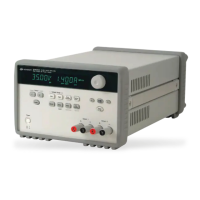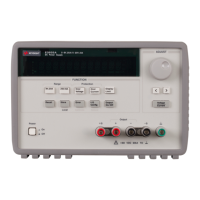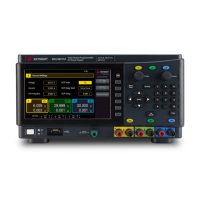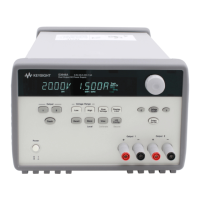Bus Bar Connections
SHOCKHAZARD, LETHAL VOLTAGES Many models generate voltages greater than 60
VDC, with some models rated at 950 VDC! Ensure that all instrument connections,
load wiring, and load connections are either insulated or covered using the safety
covers provided, so that no accidental contact with lethal voltages can occur.
The following factors should be considered when wiring the load to the power supply:
l Load wire current carrying capacity
l Load wire insulation rating (must be equivalent to the maximum output voltage)
l Load wire voltage drop
l Load wire noise and impedance effect
Wire Size
FIRE HAZARD To satisfy safety requirements, load wires must be large enough not to
overheat when carrying the maximum short-circuit output current. If there is more than
one load, then any pair of load wires must be capable of safely carrying the full-rated
current of the unit. Paralleled load wires may be required for larger-ampacity models.
The following table lists the characteristics of AWG (American Wire Gauge) copper wire.
AWG Equivalent mm
2
Nearest Metric size Ampacity (Note1) Resistance (Note2)
18 0.82 1.0 mm
2
up to 14 A 6.385 Ω
16 1.31 1.5 mm
2
up to 18 A 4.016 Ω
14 2.1 2.5 mm
2
up to 25 A 2.525 Ω
12 3.3 4 mm
2
up to 30 A 1.588 Ω
10 5.3 6 mm
2
up to 40 A 0.999 Ω
8 8.4 10 mm
2
up to 60 A 0.628 Ω
6 13.3 16 mm
2
up to 80 A 0.395 Ω
4 21.2 25 mm
2
up to 105 A 0.248 Ω
2 33.6 35 mm
2
up to 140 A 0.156 Ω
1/0 53.5 50 mm
2
up to 195 A 0.098 Ω
2/0 67.4 70 mm
2
up to 225 A 0.078 Ω
3/0 85 95 mm
2
up to 260 A 0.062 Ω
4/0 107 120 mm
2
up to 300 A 0.049 Ω
6.2/0 (350 MCM) 177 185 mm
2
up to 420 A N/A
Note 1 Ampacity is based on a single conductor in free air, 26-30 °C ambient temperature with the conductor rated at 60 °C. Ampacity
decreases at higher temperatures.
Note 2 Resistanceis in ohms/1000 feet, at 20 °C wire temperature.
Keysight RP7900 Series Operating and Service Guide 69
2 Installing the Instrument

